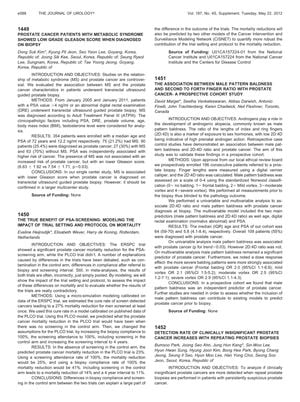The True Benefit of PSA-Screening: Modeling the Impact of Trial Setting and Protocol on Mortality
April 2012
in “
The Journal of Urology
”

TLDR PSA screening's effectiveness in reducing prostate cancer deaths can vary based on trial design and participant compliance.
In the study titled "1450 THE TRUE BENEFIT OF PSA-SCREENING: MODELING THE IMPACT OF TRIAL SETTING AND PROTOCOL ON MORTALITY," researchers used micro-simulation modeling to assess the impact of trial settings and protocols on prostate cancer mortality reduction in the context of the ERSPC and PLCO trials. The ERSPC trial showed a 27% mortality reduction for men screened at least once, while the PLCO trial did not show a significant reduction. The study predicted that without screening in the control arm, the PLCO trial would have shown a 23% mortality reduction. Adjusting for 100% screening attendance and biopsy compliance, the mortality reduction could have been 25% and 41%, respectively. Including screening in the control arm would lead to a 14% reduction, and a 4-year interval would result in an 11% reduction. The study concluded that differences in biopsy compliance and screening in the control arm could explain the different outcomes of the trials. The results were to be further validated by other models from the Cancer Intervention and Surveillance Modeling Network (CISNET) to more robustly quantify the impact of trial settings and protocols on mortality reduction. The study was funded by the National Cancer Institute and the Centers for Disease Control.